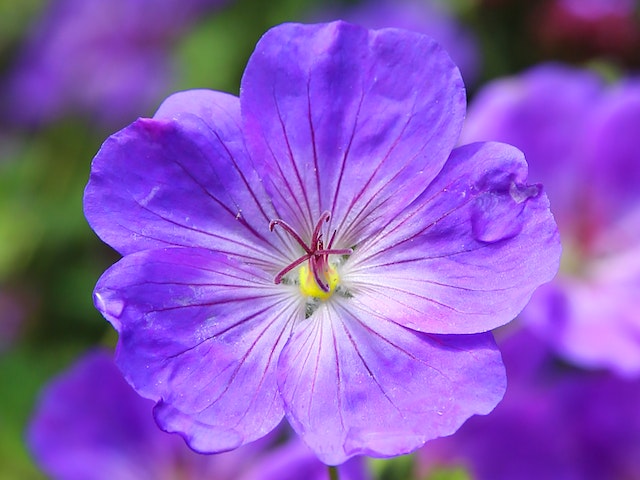Interesting February Facts For Kids (2024 Updated!)
February is a pleasant and happy month. With only 28 or 29 days, February, the second month of the year, is renowned for being the shortest. Lovebirds are renowned for hurriedly looking for “I Love You” flowers, a box of chocolates, or a teddy bear on Valentine’s Day.
There are many intriguing facts to learn about this month, from holidays and historical occasions to unusual weather phenomena. Let’s now explore some interesting facts about February!

February Symbols:
There are a few distinct emblems for each month of the year. Each month has a birthstone that goes with it. Astrological signs with a monthly flower based on a February birth month. These are all based according to the month you were born in. With your children, enjoy the month of February and teach them interesting facts about holidays, flowers, and birthstones.
1. Birthstone:

The birthstone for February is amethyst. It is viewed as a representation of love, devotion, friendship, and protection. This quartz stone, which is purple in color and is thought to represent royalty, also comes in a variety of other hues and may be found all over the world.
2. Flower

Violet and Primrose are a symbol for the month of February. Violets stand for diligence, fidelity, and loyalty. Give a violet to someone to let them know you’ll always be there for them! The primrose, which also symbolizes February, lets someone know they are indispensable.
3. Zodiac signs
Aquarius and Pisces are the February zodiac signs in astrology.
From January 20 through February 18, Aquarius is in effect.
Pisces runs from February 19 to March 20.
4. Gregorian calendar
January is the second month of the year (12-month calendar) and has 28 days in the Gregorian calendar (29 days in a leap year).
February Fun Facts
1. Where does the term “February” originate?
The month of February is called after a cleansing ceremony that was comparable to an early Roman spring cleaning festival. The Latin term “februum,” which signifies purification, is the source of the word’s origin.
2. Why do the days change to 29 every four years? What makes it a leap year, exactly?

Time for some information about the leap year? In order to avoid using even numerals, Numa inserted a leap month every so often, with February having 29 days every four years. The concept of a “leap” refers to how the calendar aligns with the Earth’s orbit. By adding a 29th day to February, the astronomical year and calendar year were brought into alignment.
3. The number of births on February 29 is how many?
Birthdays on February 29 have a 1 in 1,461 chance of occurring. The U.S. Census Bureau reports that approximately 205,000 Americans, or 0.07% of the population, were born on February 29.
The fact that those born on February 29 are referred to as “leapers” is an intriguing fact about the month of February.”
4. Not a full moon
Only in February is it possible to go the entire month without seeing a full moon. On the other side, the full moon in February is also referred to as the Snow Moon, as in 2022.
5. Lover’s Month
Valentine’s Day falls in February. This occurs every year on February 14th. Here is some knowledge related to Valentine’s Day. Every year, consumers spend about 144 million dollars on Valentine’s Day cards. And just in the United States!

Moreover, women frequently take the initiative and make the proposal on February 29 of a leap year. That has previously been done.
6. February, is the most misspelled word.
Among all the terms you can misspell, February is one of the most commonly typed inaccurately in the English language. In a previous news release, even the White House spelled the month of February incorrectly!
7. Why only 28 days in February?
Unbelievably, this was caused by an antiquated Roman superstition. The Roman Ruler Numa Pompilius expanded the original 10-month calendar to include January and February in order to perfectly synchronize it with the lunar year.
Even numbers, according to ancient Roman tradition, were unlucky, thus Numa deliberately avoided using them in his calendar.
In an effort to prevent this, he picked February—a month when Roman customs commemorating the deceased would take place—as the unfortunate month to have 28 days.
8. The Brief Month
February is commonly referred to in Welsh as “y mis bach,” which translates to “small month.” Isn’t this the most accurate way to describe February?
9. February is regarded as the ideal month.
Only February has four consecutive seven-day weeks once every six years. This is referred to as a “perfect month” when it lasts from Monday to Monday for four weeks.
10. The United States saw the union of many new states.

Many new states in the United States joined the Union in February. They include the readmitted states of Massachusetts, Oregon, Arizona, and Mississippi.
11. African-American History Month is in February.
A group of important organizations in the United States, including the National Endowment for the Humanities, National Archives and Records Administration, Library of Congress, National Gallery of Art, Smithsonian Institution, National Park Service, and United States Holocaust Memorial Museum, have joined forces to honor the many generations of African Americans who have overcome tremendous obstacles and made significant achievements in the country’s history.
12. Strangely, the rose isn’t the flower of February.

You probably think that the rose is the flower associated with February. You’d be mistaken, though. Actually, it’s primrose and violet.
13. Groundhog Day
Groundhog Day is a well-known North American custom celebrated on February 2 in both the United States and Canada. It comes from the Pennsylvania Dutch tradition that says that if a groundhog coming out of its burrow on this day sees its shadow because of clear weather, it will go back into its lair and winter will last for another six weeks; if it doesn’t see it because of cloudiness, spring will come early.
February activities for Kids:
Kids frequently associate February with hearts and love. It’s a terrific opportunity to investigate ideas like kindness and friendship as well. Enjoy these engaging February activities with your kids! You may find more intriguing February activities here.
1. Pursue hearts in Nature
This week, as you’re out and about, spend some time looking for hearts in the landscape. If you take your time to look, you’ll be astonished by how many you can locate. When we go on a HEART SCAVENGER HUNT, we always come across a lot of leaves, rocks, and even flower petals.
2. Discuss how the human heart functions:
Spend some time getting to know the human heart. Have a discussion about the heart with someone, read a book about it, or view a video on YouTube. Educate children on how to sense their own heartbeat, then monitor their heart rate throughout and immediately after the following activity.
3. Paper hearts: cut and decorate
A collection of discarded paper or colored paper that has been sliced into smaller rectangles. Make a half-heart shape on a piece of paper by showing the students how to fold it in half. Kids should then cut along the line and unfold their paper to reveal a heart that is full. Even though it’s so easy, kids adore it. Every time they unfold their paper to reveal the new heart they created, it’s a little like magic. Next, to create a lovely display, you may attach them to Valentine’s cards, hang them from a banner, or just glue them to a large piece of poster board.
4. Make a unique Valentine’s treat:
Choose a recipe that both you and your child want to attempt, then head to the kitchen to start baking.
5. Water Play Candy Heart

Water play is such a wonderful sensory activity for kids, and it also keeps them interested for a long time. Use some of your candy hearts in this simple water play to put them to good use.
Conclusion:
February is a special and interesting month because of all the interesting trivia about it. The month of February has a rich history and cultural significance, from its four-week format to its connections to notable historical people. Whether you’re commemorating Presidents’ Day or eagerly anticipating spring, the Northern Hemisphere is set to enjoy longer days. There is constantly something new to learn and admire about this great season. We sincerely hope you enjoyed learning all of these interesting facts about February, also called the month of purification.
